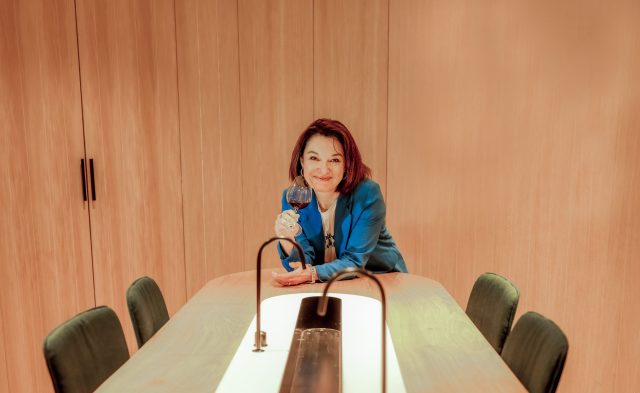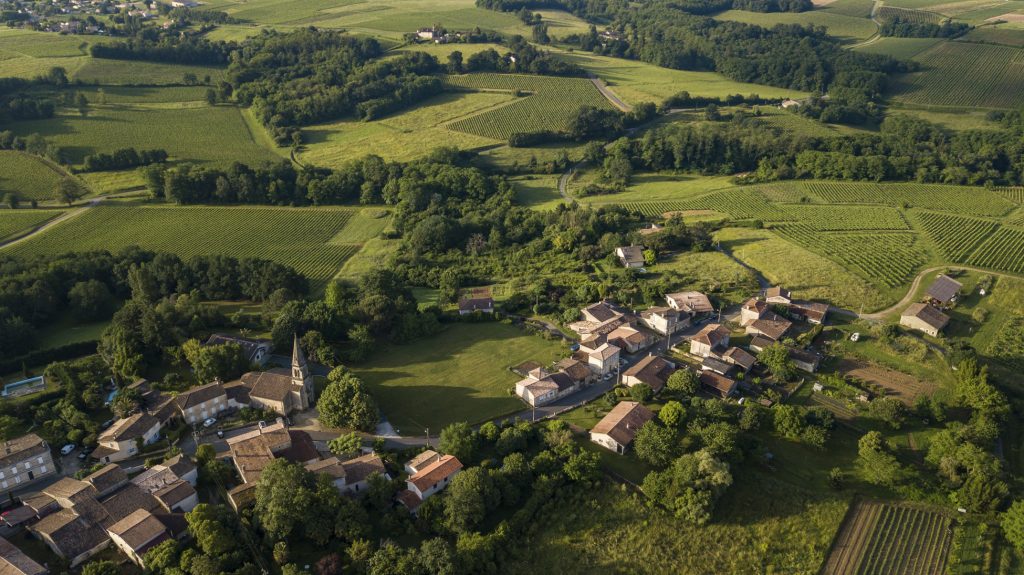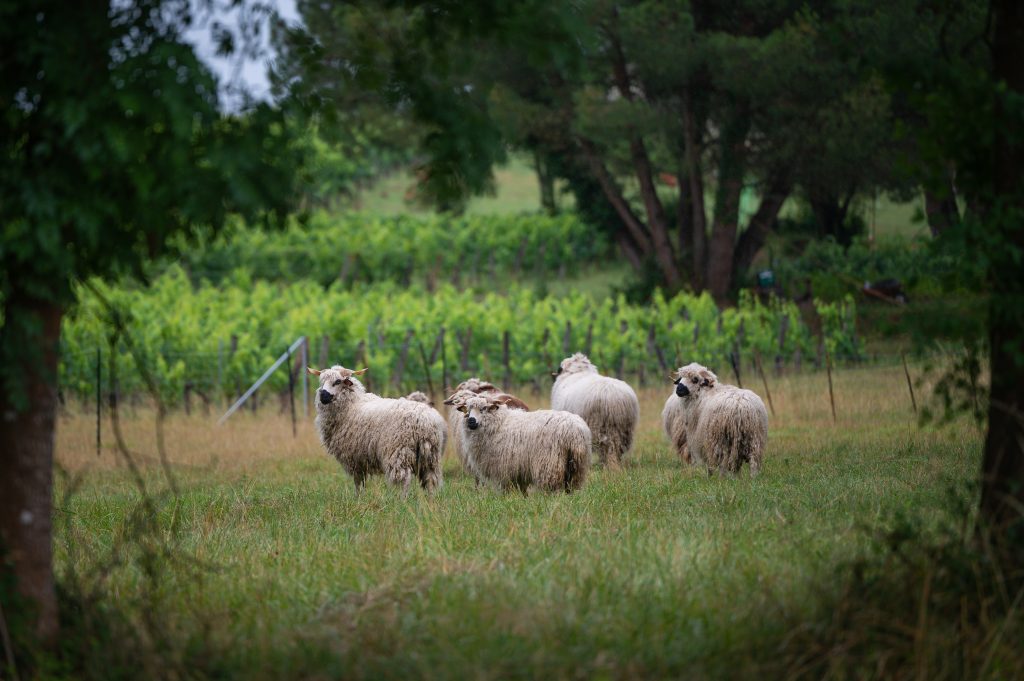This website uses cookies so that we can provide you with the best user experience possible. Cookie information is stored in your browser and performs functions such as recognising you when you return to our website and helping our team to understand which sections of the website you find most interesting and useful.
CIVB: ‘Winegrowers don’t want their work to be only the production of wine, they are part of nature’
Last year was a pretty challenging one for producers across Bordeaux, who battled late frosts, hail, and forest fires in order to produce the 2022 vintage. It is therefore no surprise that adapting to climate change both in the short, medium and long-term is a huge priority for the Bordeaux Wine Council (CIVB).

Speaking to the drinks business, the CIVB’s technical director Marie-Catherine Dufour remains convinced that while there isn’t a way to turn back the clock, there are ways that the region’s winegrowers can adapt and evolve within the confines of climate change and continue to produce its wines.
“I think that no solution will solve all our problems,” Dufour told db, “but there are other ways to produce in order to be able to live with climate change.”
The CIVB is at the forefront of future-proofing the region’s long winegrowing history, she explains, pointing to a plethora of initiatives to boost biodiversity, better manage the region’s agroecology and agroforestry, adapt growing and winemaking techniques as well as reducing carbon emissions.
Today, more than 75% of the Bordeaux vineyard area already has a certified environmental approach.
Agroecology
As part of the boost to biodiversity, the region has already embarked on a massive project to plant more shrubs, trees and plants on ecological corridors along the vineyards as well as around 150km of hedges each year. The benefits include introducing micro-climates that can regulate heat variations throughout the year, limiting the drop in temperature when it is windy and cold, fixing the soil, stimulating soil micro-fauna and micro-flora and introducing auxiliary fauna such as birds and bats, as well as carbon sequestration.
This goes hand-in-hand with a number of scientific studies on the effects this has on biodiversity in the vineyards, from mapping ecological corridors to studying the effect of grass cover in the vineyard on the vigour, yields and biodiversity of the vines, the effect of trees on the typicity of the wines themselves, studies into the difference in the biodiversity and microorganisms in the soil in the vineyard between organic and conventional farming, and an investigation on the hunting activities of bats and how to boost their role as beneficial predators, thereby lessening the use of pesticides.
“It’s such a big subject that we have a lot of answers and a lot of questions on the effect of agroecology (farming practices based on cooperation with and respect for nature) and the effect of biodiversity on our vineyards,” she said. “The soil is a universe that is almost unknown at the moment.”
The team works in conjunction with France’s National Research Institute for Agriculture, Food and Environment (INRAE) and the Technical Institute, who propose projects, many of which are linked, and take place on the same network of plots.
“It is very complicated, you can’t study it on one plot, you need a network of plots to see the viability on different plots,” Dufour said.

While once upon a time, growers might have steered clear of these kinds of projects as something that complicated their workload, now more and more winegrowers are interested in taking part and changing their practises in order to improve biodiversity.
“Today winegrowers don’t want their work to be only the production of wine, they are part of nature,” she explains. “It’s not just jumping on a trend; winegrowers believe in what they do. It might be a challenge, but we need to adapt.”
There are also studies ongoing to future-proof high-quality rootstocks themselves. Currently around 15 different rootstocks are used across the vineyards in Bordeaux – with just five being the most popular – but there are around 30 potential rootstock that could prove “interesting” to growers, Dufour says. The CIVB is supporting INRAE in order to study these to find out whether they could prove resistant to increasingly hot summers, or survive with less rainfall, or could be picked earlier.
Once the studies have been completed, the data can be used to create new rootstocks that could thrive in climates even more affected by climate change than now.
“It’s a very long term, 20-year study, but it’s important to work on it now in order to prepare for the future,” she says.
New varieties
Another key area is trialling new more drought-tolerant varieties, following the approval of number of new varieties by the France’s national appellation body, INAO in January 2021.
Since then, around 100ha have been planted with heat-tolerant red grape varieties Arinarinoa, Castets, Marselan, Touriga Nacional, and two white varieties, Alvarinho and Liliorila.
Getting the introduction of new varieties registered in the Bordeaux and Bordeaux Supérieur appellations was “a lot of work” Dufour admits, but it is crucial to plan for the long term, and the important project is now up and running.
“It’s the beginning of the building of a web of experimental plots in the vineyard,” she says. “We are beginning but we have a lot of growers that are interested in experimenting.”

It’s a project where the vignerons are the ones at the cutting edge, rather than the scientists.
“What is interesting is that we don’t have scientist who explained how to work to the wine growers, but wine growers themselves who are experimenting and can see in their own vineyard how these varieties work,” Dufour explains.
It helps of course that Bordeaux is predominantly a blended wine that can incorporate late varieties such as Petit Verdot, as well as the key early variety, Merlot. This gives winemakers a certain amount of flexibility, Dufour notes, not only to try the new varieties, but also to vary the proportions of each grape.
“The average age of the vineyard is 24 years, so won’t change all the vineyard in the short-term, but we think that we will have a decrease by 10% of surface of Merlot in 2035 and an increase of Petit Verdot, Cabernet Franc, Cabernet Sauvignon and all these new varieties, which are very important in the future,” she explains.
Dufour remains confident in Bordeaux’s traditional profile, however.
“We have great interest in being able to produce differently in the future using different proportions,” she said. “It is not a revolution, but a question of adaptation and prioritising of the key varieties,” she says.
“We want to respect the profile of the wines of Bordeaux, but what is that profile? A blended wine with freshness, aromatics, quite a lot of structure and, thanks to the blend, quite complex for red wine. You have very different wines across Bordeaux, but they can all answer to that description!”
Carbon Plan
All this is part of the CIVB’s Carbon Plan for 2030, which aims to double its previous 2019 plans. So far, greenhouse gas emissions have been decreased by 39% since 2007, but the sector want to increase this figure to 54% by 2030 and 74% by 2050.
Among different measures and priority areas, this plan will see a 10% reduction in glass though light-weighting measure as well as cutting freight emissions by increasing the use of boats instead of planes (to the US, China and Far East) and trains instead of trucks (to Northern Europe).
More environmentally friendly winemaking practices are also a key area of evolution, although there is no doubt these are proving a challenge in the short term – lighting candles, burning wood braziers, using wind machines or electric heating wires, or spraying with water comes at a cost, both financial and environmental.
“It’s very difficult because we don’t have a magic solution to efficiently protect our production against strong climate accidents like frost without impact on our emissions of greenhouse gases,” Dufour admits. The technology has become more efficient however, with new generation of wind machines and in the meantime, winegrowers are tweaking their practices to minimise the risks of frosts.
An example of this is where growers choose to prune their more precocious plots at a later stage in the season to delay the onset of buds and thereby minimise the danger of being hit by a late frost. Other measures include using grass cover in the vineyard to raise the ground temperature (with sheep to crop the grass) and leaving more leaves on the vines to protect the bunches from the sun – all of which has seen positive results in real vineyards over the last few years.
“I’m sure the future is not in monoculture but in polyculture,” Dufour nods. “It’s very challenging as it is very different to what we do today… but it will be necessary and better for the biodiversity and the environment.”
For more info, visit www.bordeaux.com

